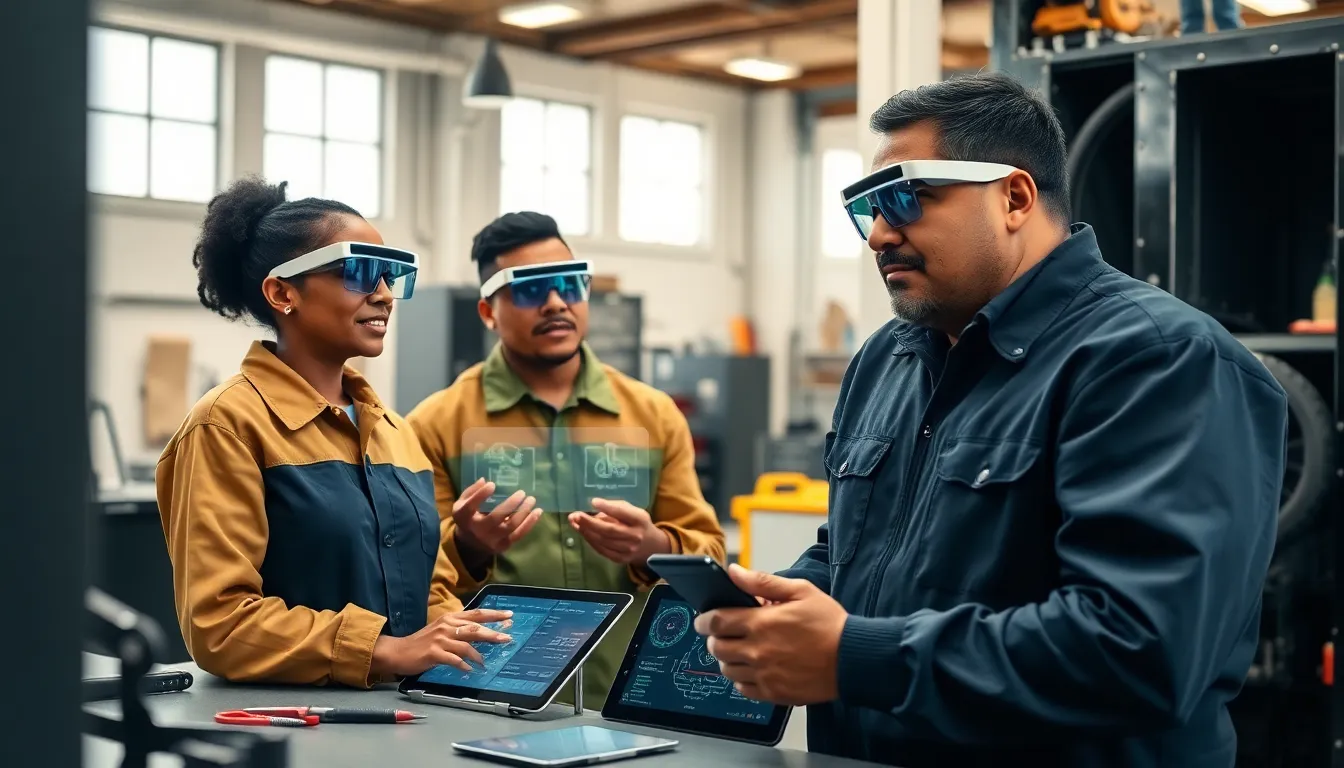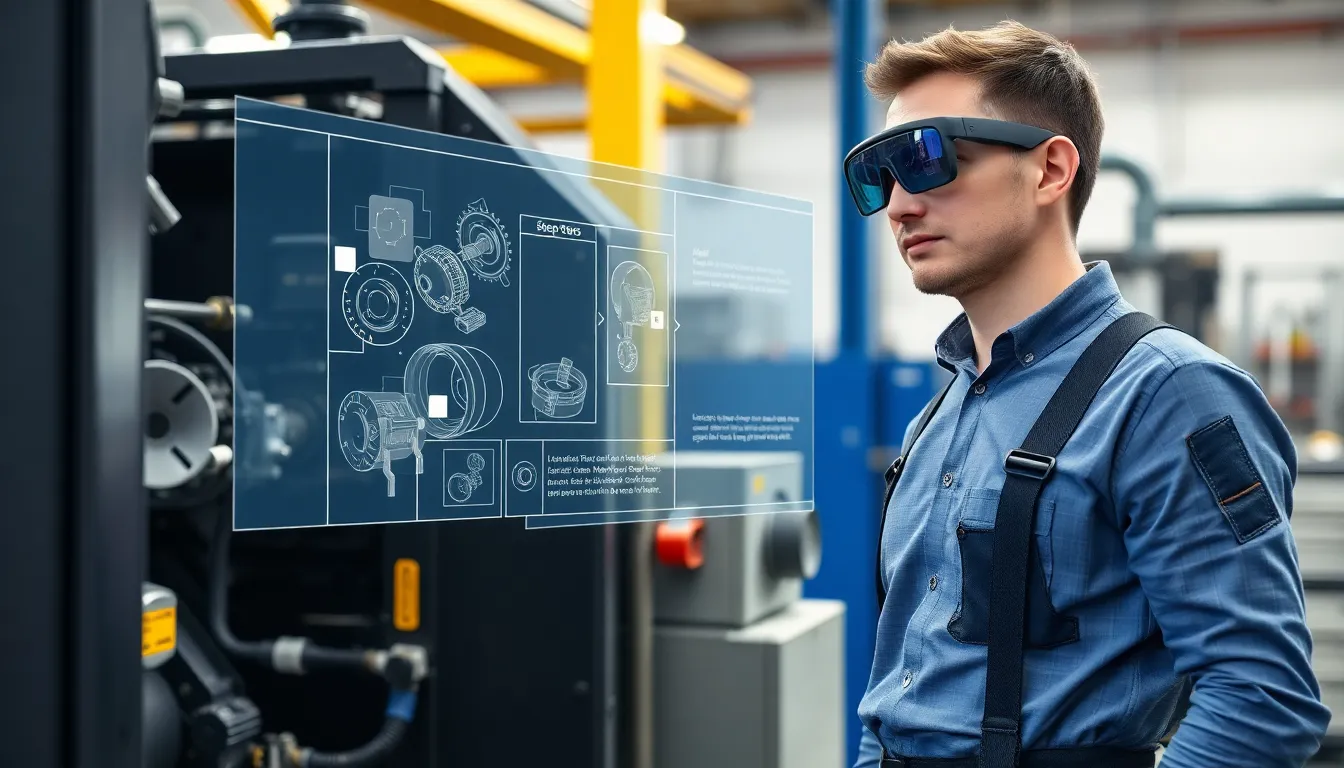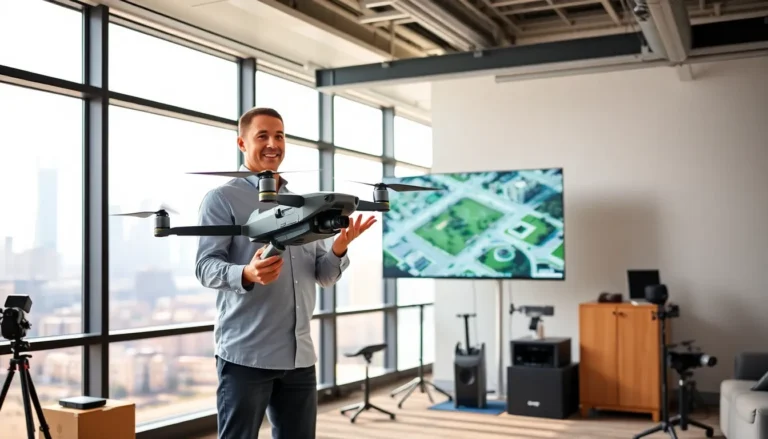Imagine a world where a technician can see the inner workings of a machine without taking it apart, all while their hands are free to make adjustments. Welcome to the exciting realm of augmented reality (AR) for field services. This technology doesn’t just add a layer of digital information, it’s about to revolutionize how teams work in the field. In this text, we’ll dive deep into the incredible ways AR is changing workflows, boosting efficiency, and yes, even making those tedious service calls a bit more enjoyable. Get ready to see how these futuristic glasses are becoming the unsung heroes of field service operations.
Table of Contents
ToggleUnderstanding Augmented Reality in Field Services

Augmented reality involves overlaying digital information onto the real world, giving users a unique blend of physical and virtual interactions. For field service professionals, this means enhanced visibility and insights right in front of their eyes. Think of AR as a GPS for fixing machinery, guiding technicians with step-by-step instructions overlaid on the actual equipment they’re servicing.
Using devices such as smart glasses or tablets, technicians can visualize systems, access manuals, or even receive live support from colleagues. This real-time connection between the physical world and digital enhancements dramatically elevates traditional field service methodologies, making jobs faster and more precise.
Benefits of Augmented Reality in Field Services
The benefits of incorporating AR into field services are numerous, with some standing out significantly:
- Enhanced Training and Onboarding: New technicians can train on real equipment using AR overlays that show essential components, reducing the learning curve dramatically.
- Increased Efficiency: With access to information at their fingertips, technicians can resolve issues more quickly. This means less time on a single call, allowing for more jobs completed per day.
- Reduced Downtime: AR can indicate problems before they escalate, helping teams conduct preventive maintenance and minimizing costly breakdowns.
- Improved Customer Engagement: Technicians can showcase issues to customers in real-time, ensuring transparency and fostering trust. When customers understand what’s wrong, they’re more likely to feel satisfied with the service.
- Cost Savings: By minimizing errors and reducing the need for repeat visits, AR helps companies save on operational costs.
Key Applications of Augmented Reality in Field Services
AR has a wide array of applications within field services. Here are some key areas where this technology shines:
Predictive Maintenance
By using AR, companies can analyze real-time data from machines and predict failures before they happen. This proactive approach can drastically reduce equipment failures and extend asset lifespan.
Remote Assistance
Imagine a technician in the field struggling with a complex repair. With AR, they can connect live with an expert who sees exactly what they see. This functionality allows for guided support, enabling faster and more effective troubleshooting.
Step-by-Step Visual Guides
Technicians can access visual guides superimposed on the actual equipment they’re working with. This feature can make even the most complicated tasks more manageable.
Challenges and Considerations for Implementing Augmented Reality
While AR offers incredible advantages, there are challenges that companies face when trying to carry out this technology in their field service operations:
- High Initial Costs: Buying AR devices and software can strain budgets, especially for small businesses. Although the long-term savings might justify the initial expense, this requires a strategic evaluation.
- Technical Challenges: Network reliability and connectivity issues can hinder the proper functionality of AR applications, particularly in remote areas where service is spotty.
- User Adoption: Employees may resist change, especially older technicians who are more accustomed to traditional methods. Training is essential to ease this transition and highlight AR’s benefits.
- Integration with Existing Systems: Ensuring AR works seamlessly with current platforms can require significant IT resources, complicating initial deployment.
Future Trends in Augmented Reality for Field Services
As AR technology evolves, we can expect several trends to reshape field services in the coming years:
Increased Miniaturization
Devices will likely become smaller and more powerful, further enhancing usability. Imagine AR glasses that are lightweight and as normal-looking as a pair of sunglasses.
Artificial Intelligence Integration
AI will play a significant role in making AR smarter. Think of intelligent systems that not only guide technicians but also predict what might go wrong based on historical data.
Enhanced Collaboration Tools
As remote work becomes more commonplace, AR can help collaborations not just in field services but across teams, fostering a greater environment for problem-solving.





